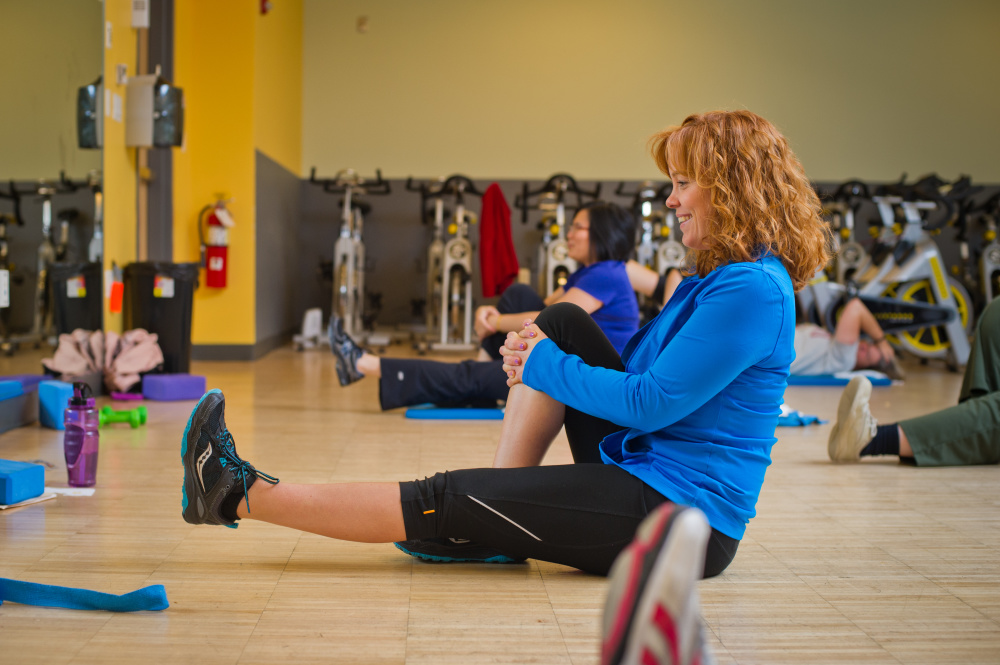During cancer treatment, patients may face side effects like fatigue, insomnia, anxiety and neuropathy. While some patients may seek additional medication to combat these symptoms, exercise is an excellent pill-free alternative.
Dana-Farber exercise physiologist Nancy Campbell, MS, recently answered questions during a live chat on exercising during and after cancer treatment. Campbell discussed ways to get started, how to stay motivated, as well as some tips for reducing neuropathy with exercise.
An excerpt of the chat is included below and a full transcript is available in Dana-Farber’s Health Library.

Should cancer patients wait until they are done with treatment before starting an exercise routine?
If you feel well enough to start exercising, and if your oncologist and care team have approved a fitness routine, then patients can certainly work out during treatment. It’s important to start slow; try walking, yoga or stretching before working your way up to a more active routine.
How do you recommend patients get started with fitness routines?
Patients should start slow and work their way up to more rigorous exercise. I recommend starting with a regular walking routine or some yoga and stretching. Flexibility exercises, like yoga, can help you maintain mobility and get you ready for more vigorous exercises.
Once you feel comfortable, you can work your way up to aerobic exercises, like jogging, cycling (stationary bikes are fine), swimming, or brisk walks. These can help you burn calories, lose weight and build cardiovascular fitness.
Resistance training can also help maintain muscle and bone mass, which may be important during and after treatment.
It’s important to talk with your oncologist and care team before starting a fitness routine. Seeking help from a personal trainer or exercise physiologist can also help you get started.
More tips and information is available in this Slideshare presentation.
Learn more:
Can exercise help with neuropathy? What exercises do you recommend?
Exercise is a great way to help deal with side effects of neuropathy. If you have neuropathy in your hands or fingers, I recommend exercises like:
- Finger rolls – Extend your arms in front of you at shoulder height with palms facing away from you. Then, starting with your little finger, curl your hand into a fist one finger at a time. After that, rotate the fist to face you and open up your hand, one finger at a time, and rotate the palm back out to the front.
- Finger taps – Extend your arms in front of you at shoulder height. Touch your little finger to your thumb and repeat with other fingers, then repeat the motion in reverse order (starting with index finger). You can also do finger taps sitting down; place your palms on your lap and lift each finger to tap twice on your lap.
If you have neuropathy in your feet, you can try:
- Ankle circles
- Calf raises/stretches
- Standing heel to toe – Place right foot directly in front of left foot, eyes open, arms at side or across chest. Look straight ahead at a stationary object and hold for up to 30 seconds before repeating with left foot in front of right foot. If you need to, hold on to a chair for support.
- Standing side leg – Stand next to a chair in an upright position with feet together. Then, raise your leg in an outward motion, as far as possible, making sure the foot is pointing forward. Hold this for two seconds before returning to the starting position. Keep your back straight and your abdominal muscles engaged. Then, repeat with the other leg.
Learn more about these and other exercises to help neuropathy.
The Leonard P. Zakim Center for Integrative Therapies at Dana-Farber also offers great classes that can help with neuropathy symptoms.
How often do you recommend cancer patients and survivors should exercise?
The American College of Sports Medicine and American Cancer Society recommend 150 minutes per week of cardiovascular exercise and 2-3 days of strength training per week. However, it’s important to listen to your body and increase your exercise slowly, especially if you are still in treatment.
I have been exercising and doing yoga four times/week along with walking, but some days my tendons get so cramped I have to stop. It seems the more I exercise, the more my legs cramp and I have severe neuropathy in my feet. What do you suggest? I would like to get back to a normal activity level, if possible.
You may want to have a day of rest between your activities or decrease the intensity or duration until your leg cramps decrease. It might help to keep track of your activity in a journal or with an activity tracker like a pedometer or Fitbit. At Dana-Farber we offer classes like Energize Your Feet to help with the symptoms of neuropathy and other foot issues. It’s also important to stay hydrated during activities and meeting with a nutritionist may help identify any dietary changes that could help with cramping.
